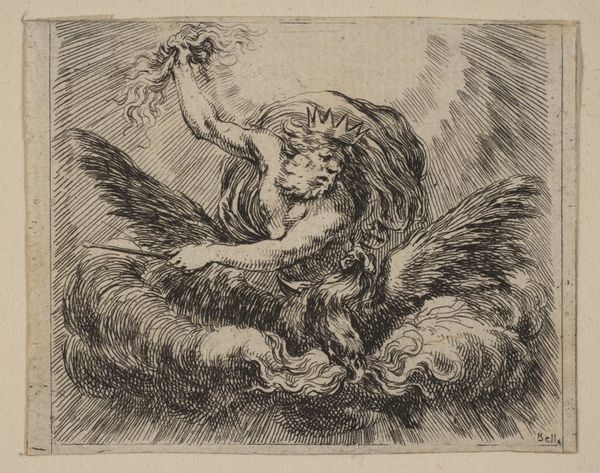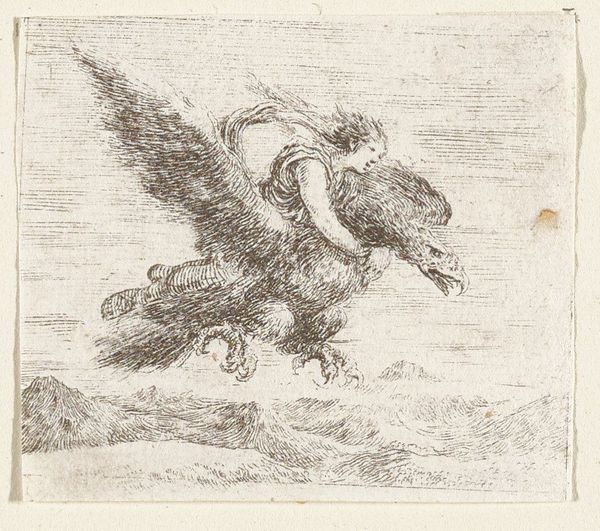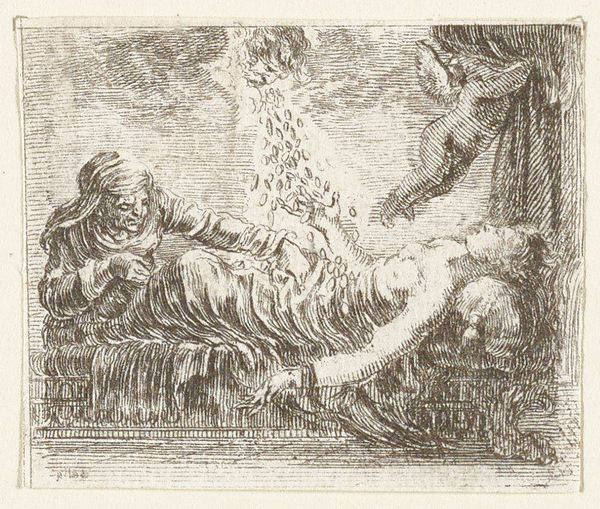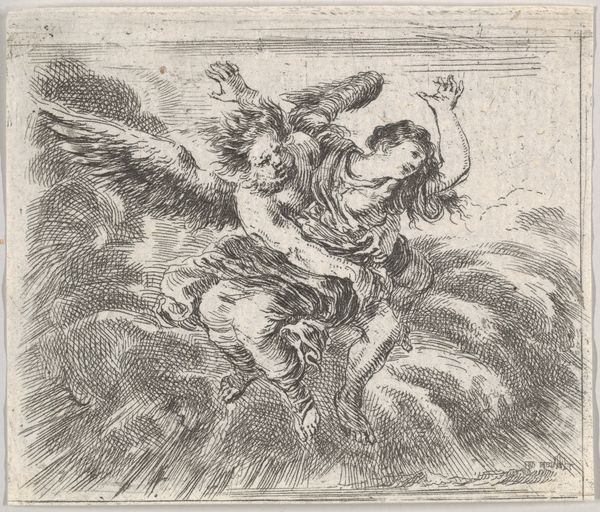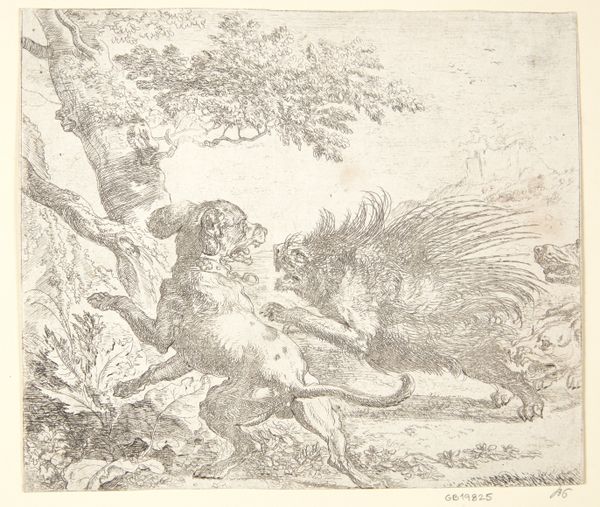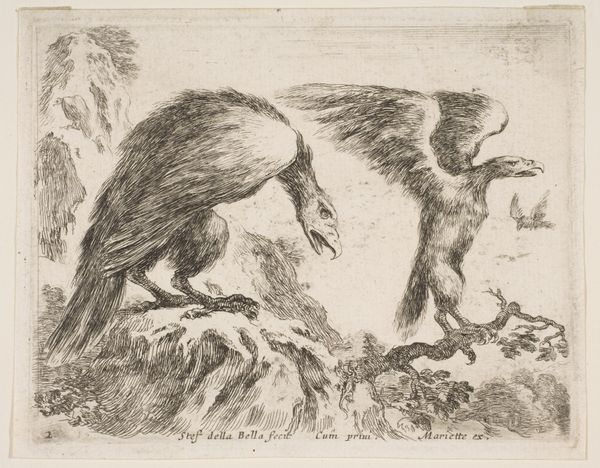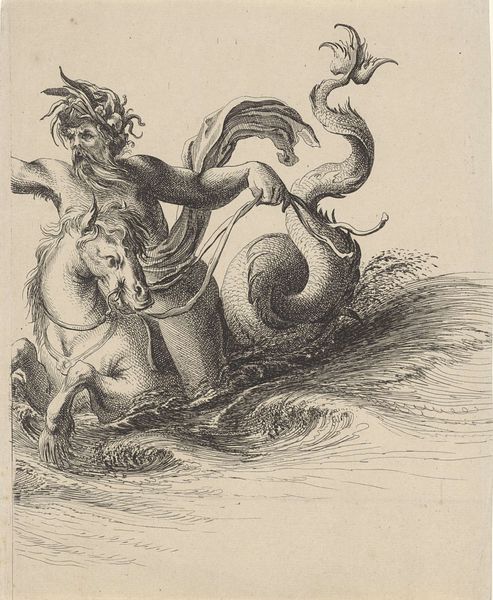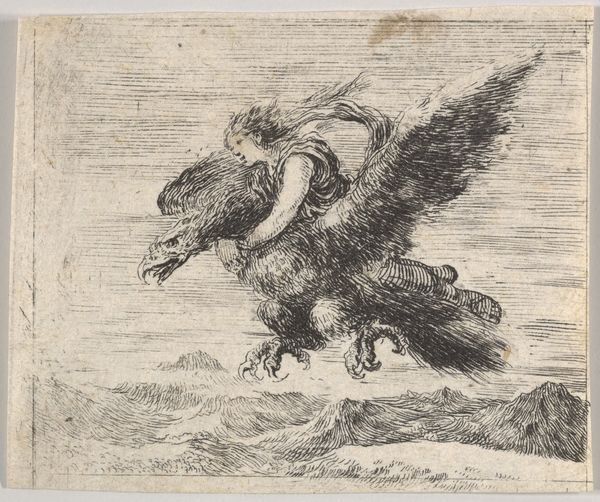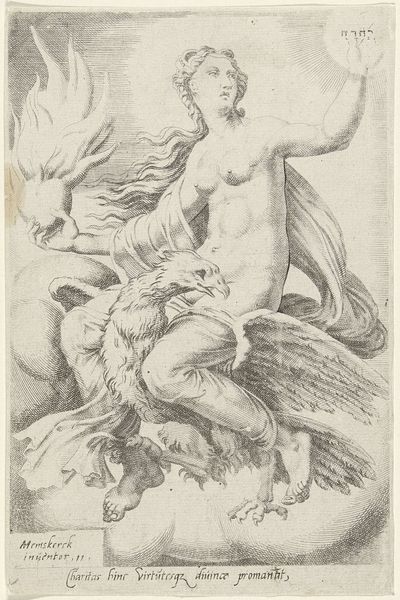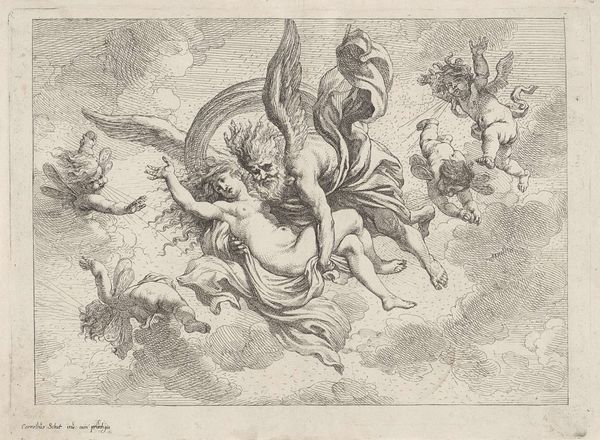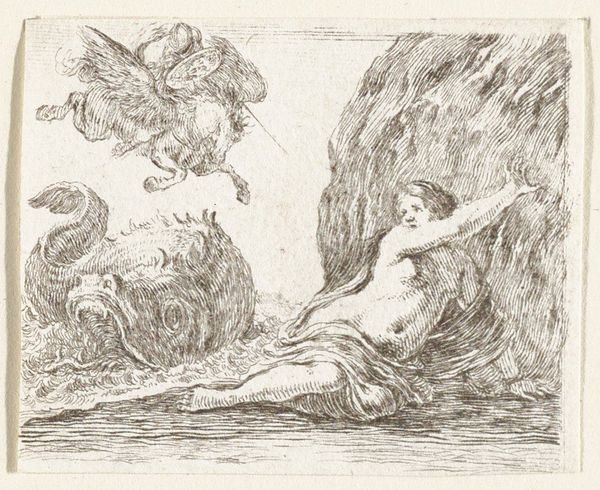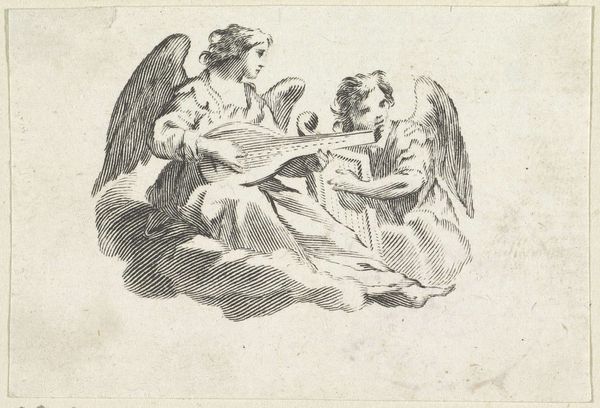
print, etching, engraving
#
allegory
#
baroque
# print
#
etching
#
figuration
#
mythology
#
history-painting
#
engraving
Dimensions: 1 3/16 x 2 3/16 in. (3.02 x 5.56 cm) (image, sheet)
Copyright: Public Domain
This tiny print, Jupiter, was made by Stefano della Bella sometime in the 17th century. He used a process called etching to create it. Etching is a printmaking technique where a metal plate is coated with a waxy substance, and the artist scratches an image into this coating. Then the plate is dipped in acid, which bites into the exposed metal, creating lines. The plate is then inked, and the ink held in these lines transfers to paper under pressure. Look closely, and you can see these fine, precise lines. The tonal range depends on the duration that certain areas are exposed to the acid; this is a real skill. Printmaking like this was crucial in the early modern period, as it allowed images to circulate widely. Think of it as an early form of mass media, where the labor-intensive work of the artist gets multiplied across many impressions. In that sense, even this mythological scene is tied to the wider social issues of labor, politics, and consumption. Next time you look at a print, think of how the material and process used in its making affects its cultural significance.
Comments
No comments
Be the first to comment and join the conversation on the ultimate creative platform.
